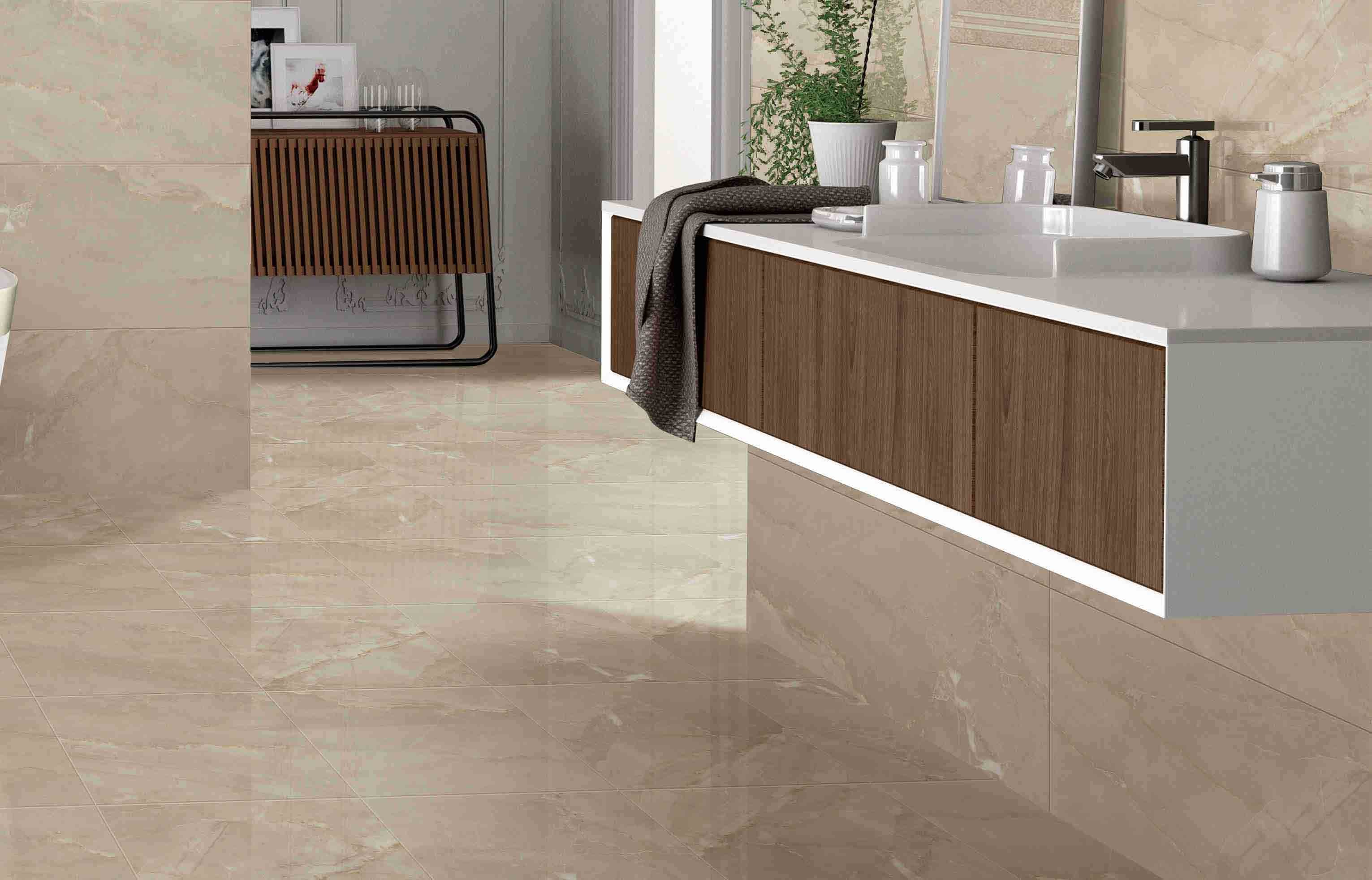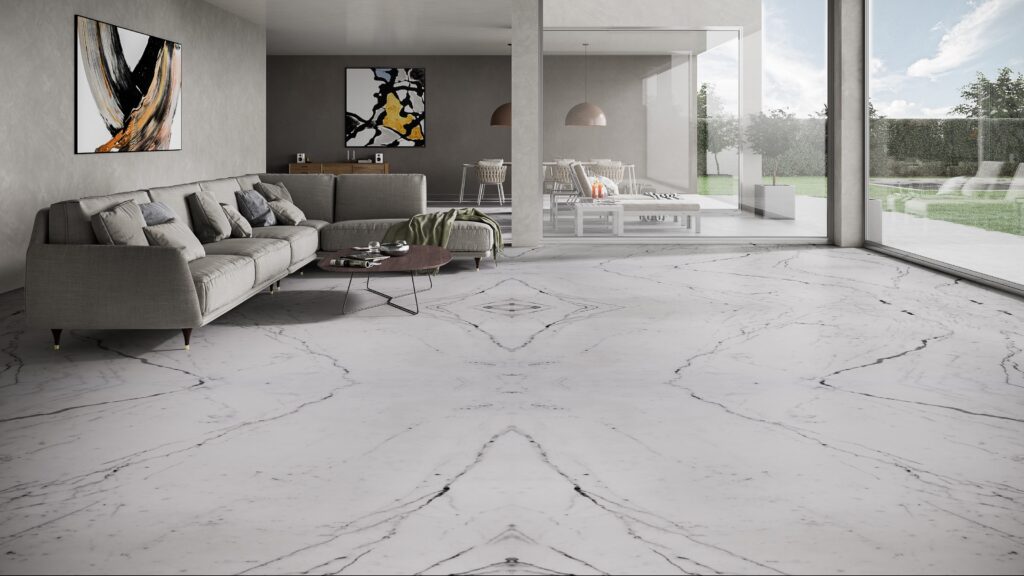Italian marble flooring is synonymous with luxury, elegance, and timeless beauty. This exquisite material has been used for centuries to adorn the most prestigious buildings and homes around the world. Today, I’ll take you through everything you need to know about Italian marble flooring, from its history and types to installation and maintenance. Let’s dive into this journey of opulence and sophistication.
The Rich History of Italian Marble
A Legacy of Grandeur
Italian marble’s history dates back to ancient Rome, where it was used to construct iconic structures like the Pantheon and the Colosseum. The Romans were the first to recognize the beauty and durability of this natural stone, and their legacy lives on in the numerous ancient buildings that still stand today.
Renaissance Revival
During the Renaissance, Italian marble saw a resurgence in popularity. Artists and architects like Michelangelo and Leonardo da Vinci used it to create masterpieces that have stood the test of time. Michelangelo’s David, carved from a single block of Carrara marble, remains one of the most celebrated sculptures in the world.
Modern-Day Marvels
In contemporary times, Italian marble continues to be a symbol of luxury and elegance. It’s favored by designers and architects for high-end residential and commercial projects. From lavish hotels to opulent homes, Italian marble remains a top choice for those seeking to make a statement.
The Quarries of Italy
Italy is home to some of the world’s most famous marble quarries. Carrara, Calacatta, and Statuario are just a few names that have become synonymous with high-quality marble. These quarries have been in operation for centuries, providing the world with some of the finest marble available.
Cultural Significance
Italian marble is more than just a building material; it’s a part of Italy’s cultural heritage. The art of quarrying and working with marble has been passed down through generations, preserving traditional techniques while embracing modern advancements.
Economic Impact
The marble industry is a significant contributor to Italy’s economy. It provides jobs for thousands of people and generates substantial revenue through exports. Italian marble’s global demand ensures that this industry remains vibrant and vital to the country’s economic health.

Types of Italian Marble
Carrara Marble
Carrara marble is perhaps the most famous of all Italian marbles. Known for its white and blue-grey veining, it’s a favorite for sculptures and architectural details. Its subtle elegance makes it a versatile choice for various applications, from flooring to countertops.
Calacatta Marble
Calacatta marble is often confused with Carrara, but it has distinct characteristics. It features bold, dramatic veining with a pure white background. This makes it a striking choice for those looking to make a bold statement with their flooring.
Statuario Marble
Statuario marble is another high-end option, prized for its brilliant white color and intricate veining. It’s often used in luxury homes and hotels, where its beauty can be showcased to maximum effect. Its rarity makes it one of the most expensive marbles available.
Botticino Marble
Botticino marble is known for its warm beige tones and subtle veining. It’s a popular choice for creating a cozy, inviting atmosphere in both residential and commercial spaces. Its versatility allows it to blend seamlessly with a variety of design styles.
Travertine Marble
Travertine, while technically a type of limestone, is often grouped with marbles due to its similar appearance and use. It features earthy tones and a distinctive porous texture, making it a favorite for both indoor and outdoor applications.
Breccia Oniciata Marble
Breccia Oniciata marble is characterized by its unique, swirling patterns of brown, beige, and gold. It’s a dramatic choice that adds a touch of opulence to any space. Its rich colors and intricate patterns make it a standout option for those looking to create a luxurious environment.
Benefits of Italian Marble Flooring
Timeless Beauty
One of the most significant benefits of Italian marble flooring is its timeless beauty. The unique veining and color variations ensure that each piece is one-of-a-kind, creating a floor that’s not only functional but also a work of art.
Durability
Italian marble is incredibly durable and can last for decades with proper care. It’s resistant to scratches and cracks, making it an excellent choice for high-traffic areas. Its longevity means that it’s a worthwhile investment for any home or commercial property.
Versatility
The wide variety of Italian marbles available means that there’s a perfect option for every design style. Whether you’re looking for something classic and understated or bold and dramatic, you’ll find a marble that fits your vision. Its versatility extends to its applications, from flooring to countertops to wall cladding.
Heat Resistance
Marble is naturally heat-resistant, making it an ideal choice for areas like kitchens and bathrooms. It remains cool to the touch, providing a refreshing feel underfoot, especially in warmer climates. This heat resistance also means that it won’t warp or discolor when exposed to high temperatures.
Increased Property Value
Installing Italian marble flooring can significantly increase the value of your property. Its association with luxury and elegance makes it a sought-after feature for potential buyers. This means that, in addition to enjoying its beauty and functionality, you can also benefit financially in the long run.
Low Maintenance
While marble does require some care, it’s relatively low maintenance compared to other high-end flooring options. Regular sweeping and occasional mopping with a pH-neutral cleaner are usually enough to keep it looking pristine. With proper sealing, it can resist stains and spills, ensuring that it remains beautiful for years to come.
Installation Process of Italian Marble Flooring
Selecting the Marble
The first step in installing Italian marble flooring is selecting the right marble for your space. This involves considering the color, veining, and finish that best suits your design vision. Visiting a showroom or working with a designer can help you make the perfect choice.
Preparing the Subfloor
Before installation can begin, the subfloor must be properly prepared. This involves ensuring that it’s clean, level, and free of any debris. Any imperfections in the subfloor can affect the final appearance and durability of the marble flooring.
Cutting the Marble
Once the marble has been selected and the subfloor prepared, the marble tiles need to be cut to fit the space. This requires precision and skill, as even small errors can lead to noticeable gaps or misalignment. Professional installers use specialized tools to ensure clean, accurate cuts.
Laying the Tiles
With the marble cut to size, the next step is laying the tiles. This involves applying a thin layer of adhesive to the subfloor and carefully placing each tile in position. Spacers are used to ensure consistent gaps between tiles, which will later be filled with grout.
Grouting the Tiles
After the tiles have been laid and the adhesive has set, the next step is grouting. This involves filling the gaps between the tiles with a grout mixture, which helps to secure the tiles in place and prevent moisture from seeping underneath. Once the grout has dried, any excess is wiped away to leave a clean, polished surface.
Sealing the Marble
The final step in the installation process is sealing the marble. This helps to protect it from stains and spills, ensuring that it remains beautiful for years to come. Sealers need to be reapplied periodically, depending on the level of traffic and exposure to moisture.
Caring for Your Italian Marble Flooring
Regular Cleaning
To keep your Italian marble flooring looking its best, it’s essential to clean it regularly. Sweeping or vacuuming can remove loose dirt and debris, while a damp mop can help to remove any remaining dust. It’s important to use a pH-neutral cleaner to avoid damaging the marble’s surface.
Avoiding Stains
Marble is porous, which means it can absorb liquids and become stained. To avoid this, it’s important to clean up spills immediately. Using coasters, placemats, and area rugs can also help to protect the marble from potential staining agents.
Sealing the Marble
Regularly sealing your marble flooring is crucial to maintaining its beauty and durability. Sealers create a protective barrier that helps to prevent stains and spills from penetrating the marble’s surface. Depending on the level of use, sealers may need to be reapplied every 6 to 12 months.
Preventing Scratches
While marble is durable, it can still be scratched by sharp objects. To prevent this, use felt pads under furniture legs and avoid dragging heavy objects across the floor. Regularly trimming your pets’ nails can also help to minimize the risk of scratches.
Polishing the Marble
Over time, marble can lose its shine due to everyday wear and tear. Polishing your marble flooring can restore its original luster and enhance its beauty. Professional polishing services are available, but you can also use a marble polish and a soft cloth to achieve similar results at home.
Addressing Damage
If your marble flooring does become scratched or chipped, it’s important to address the damage promptly. Small scratches can often be buffed out with a polishing compound, while more significant damage may require professional repair. Keeping a close eye on your marble and addressing issues as they arise can help to maintain its pristine appearance.
Trends and Design Ideas
Classic White Marble
Classic white marble, such as Carrara or Calacatta, remains a popular choice for its timeless elegance. It pairs beautifully with a variety of design styles, from traditional to contemporary. Using white marble flooring can create a bright, airy atmosphere that’s both sophisticated and inviting.
Bold Veining
For those looking to make a statement, bold veining is a growing trend in marble flooring. Marbles like Statuario and Calacatta feature dramatic veining patterns that add a touch of opulence to any space. Pairing bold-veined marble with minimalist décor allows the flooring to take center stage.
Mix and Match
Mixing different types of marble can create a unique and personalized look. Combining marbles with contrasting colors and veining patterns can add visual interest and depth to your space. This approach works particularly well in larger areas, where the different marbles can be used to define distinct zones.
Herringbone and Chevron Patterns
Herringbone and chevron patterns are becoming increasingly popular for marble flooring. These classic patterns add a touch of elegance and sophistication to any room. Using marble in these patterns can create a sense of movement and dynamism, making your space feel more lively and engaging.
Marble and Wood Combination
Combining marble and wood flooring is another trend that’s gaining traction. This pairing brings together the best of both worlds: the natural warmth of wood and the cool elegance of marble. This combination works well in both traditional and contemporary settings, adding texture and contrast to your design.
Custom Inlays
For a truly unique look, consider incorporating custom inlays into your marble flooring. These can range from simple geometric patterns to intricate designs, adding a personalized touch to your space. Custom inlays can be used to highlight specific areas, such as entryways or dining rooms, creating a focal point that’s sure to impress.
WHY CHOOSE ITALIAN MARBLE FLOORING FOR YOUR HOME?
Polished Italian Marble Flooring, Thickness: 20 mm, Size: 60 * 60 (cm), Rs 500 /square feet ID
Atlantic Grey Italian Marble
Italian Marble Floor Tiles, For Home Flooring
Related Posts:








